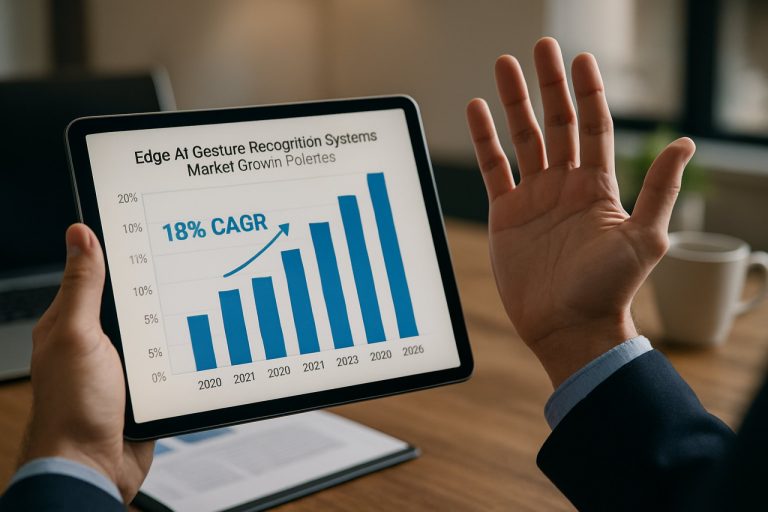
Flexible OLED Display Manufacturing Industry Report 2025: Market Dynamics, Technology Innovations, and Strategic Forecasts. Explore Key Growth Drivers, Regional Trends, and Competitive Insights Shaping the Next Five Years.
- Executive Summary & Market Overview
- Key Technology Trends in Flexible OLED Display Manufacturing
- Competitive Landscape and Leading Players
- Market Growth Forecasts (2025–2030): CAGR, Revenue, and Volume Analysis
- Regional Market Analysis: Opportunities and Demand Hotspots
- Future Outlook: Emerging Applications and Investment Trends
- Challenges, Risks, and Strategic Opportunities
- Sources & References
Executive Summary & Market Overview
Flexible OLED (Organic Light Emitting Diode) display manufacturing represents a transformative segment within the global display technology market, characterized by the production of ultra-thin, bendable, and lightweight screens. These displays are increasingly integrated into smartphones, wearables, automotive dashboards, and next-generation consumer electronics, driven by their superior image quality, design versatility, and energy efficiency. In 2025, the flexible OLED display manufacturing market is poised for robust growth, propelled by surging demand for foldable and rollable devices, advancements in material science, and expanding applications across industries.
According to International Data Corporation (IDC), the global flexible OLED display market is expected to surpass $30 billion in revenue by 2025, reflecting a compound annual growth rate (CAGR) of over 20% from 2022. This expansion is underpinned by aggressive investments from leading display manufacturers such as Samsung Display, LG Display, and BOE Technology Group, who are scaling up production capacities and innovating new form factors to meet evolving consumer and OEM requirements.
Asia-Pacific remains the epicenter of flexible OLED manufacturing, accounting for more than 80% of global production capacity in 2025, with China, South Korea, and Japan leading the charge. The region’s dominance is attributed to substantial government support, a robust supply chain ecosystem, and the presence of major panel makers. Meanwhile, North America and Europe are witnessing increased adoption, particularly in automotive and premium consumer electronics segments, as reported by Statista.
Key market drivers in 2025 include:
- Rising consumer preference for foldable smartphones and tablets, with shipments expected to double year-over-year (Counterpoint Research).
- Automotive sector integration, where flexible OLEDs enable curved, customizable dashboards and infotainment systems (Automotive World).
- Wearable technology advancements, leveraging flexible displays for ergonomic, lightweight designs (Gartner).
Despite strong growth prospects, the industry faces challenges such as high manufacturing costs, yield optimization, and intellectual property concerns. However, ongoing R&D and strategic partnerships are expected to address these hurdles, solidifying flexible OLED’s role as a cornerstone of future display innovation.
Key Technology Trends in Flexible OLED Display Manufacturing
Flexible OLED display manufacturing is undergoing rapid transformation, driven by technological advancements that are enabling thinner, lighter, and more durable displays for a range of applications, from smartphones and wearables to automotive and foldable devices. In 2025, several key technology trends are shaping the competitive landscape and production capabilities in this sector.
- Substrate Innovation: The shift from traditional glass substrates to advanced plastic materials such as polyimide is a defining trend. Polyimide substrates offer superior flexibility, thermal stability, and mechanical strength, allowing for the production of bendable and rollable displays. Leading manufacturers like Samsung Display and LG Display are investing heavily in substrate R&D to improve yield rates and reduce defect density.
- Thin-Film Encapsulation (TFE): Protecting sensitive OLED materials from moisture and oxygen is critical. TFE technology, which replaces traditional glass encapsulation with multilayered organic and inorganic films, is now standard in flexible OLED production. This advancement enhances device longevity and enables ultra-thin form factors, as reported by IDTechEx.
- Advanced Backplane Technologies: The adoption of low-temperature polycrystalline oxide (LTPO) and low-temperature polycrystalline silicon (LTPS) backplanes is improving power efficiency and refresh rates. These technologies are crucial for high-end applications, such as foldable smartphones and smartwatches, where battery life and display performance are paramount (Display Daily).
- Laser Lift-Off (LLO) Processes: LLO technology enables the separation of OLED layers from rigid carriers, facilitating mass production of flexible panels. This process is being refined to minimize damage and improve throughput, with companies like APOLLO Global Management investing in equipment upgrades.
- Roll-to-Roll (R2R) Manufacturing: R2R processing is gaining traction for its potential to lower costs and scale up production. By enabling continuous fabrication of flexible OLEDs, R2R is expected to be a key enabler for next-generation large-area and wearable displays (OLED-Info).
These technology trends are collectively driving higher yields, better performance, and broader adoption of flexible OLED displays across industries in 2025.
Competitive Landscape and Leading Players
The competitive landscape of the flexible OLED display manufacturing market in 2025 is characterized by intense rivalry among a handful of dominant players, rapid technological advancements, and strategic investments in capacity expansion. The sector is led by established South Korean and Chinese manufacturers, with a few Japanese and American firms also playing significant roles.
Samsung Display remains the undisputed leader, leveraging its early-mover advantage, robust intellectual property portfolio, and vertically integrated supply chain. The company’s focus on high-yield production processes and continuous innovation in thin-film encapsulation and flexible substrates has enabled it to maintain a significant share of the global market, particularly in the premium smartphone and foldable device segments (Samsung Display).
LG Display is another major player, with a strong presence in both mobile and large-format flexible OLED panels, including automotive and television applications. LG’s investments in Gen 6 and Gen 8.5 flexible OLED production lines have positioned it as a key supplier for global brands seeking high-quality, large-area flexible displays (LG Display).
Chinese manufacturers, notably BOE Technology Group and TCL China Star Optoelectronics Technology (CSOT), have rapidly closed the technology gap with their Korean counterparts. BOE, in particular, has expanded its flexible OLED capacity aggressively, supplying panels to leading smartphone OEMs and investing in next-generation technologies such as under-display cameras and rollable displays (BOE Technology Group). TCL CSOT is also scaling up its flexible OLED output, targeting both domestic and international markets (TCL CSOT).
Japanese firms like Japan Display Inc. (JDI) and Sharp Corporation are present but face challenges in scaling up flexible OLED production due to capital constraints and late market entry (Japan Display Inc.; Sharp Corporation). Meanwhile, Apple Inc. continues to influence the competitive dynamics as a major buyer, driving suppliers to innovate and meet stringent quality standards (Apple Inc.).
- Strategic partnerships and joint ventures are increasingly common, as seen in collaborations between panel makers and material suppliers to accelerate R&D.
- Patent litigation and licensing agreements remain a feature of the landscape, reflecting the high value of proprietary OLED technologies.
- Capacity expansion in China is intensifying price competition, pressuring margins but also accelerating global adoption of flexible OLEDs.
Market Growth Forecasts (2025–2030): CAGR, Revenue, and Volume Analysis
The flexible OLED display manufacturing market is poised for robust growth between 2025 and 2030, driven by surging demand in consumer electronics, automotive displays, and emerging applications such as foldable smartphones and wearable devices. According to projections by International Data Corporation (IDC), the global flexible OLED display market is expected to register a compound annual growth rate (CAGR) of approximately 18% during this period. This acceleration is attributed to ongoing advancements in production technologies, increased investments in manufacturing capacity, and the rapid adoption of flexible displays by leading device manufacturers.
Revenue forecasts indicate that the market size, which was valued at around $15 billion in 2024, could surpass $34 billion by 2030. This growth is underpinned by the expansion of high-volume manufacturing facilities in Asia-Pacific, particularly in South Korea and China, where companies such as Samsung Display and LG Display are scaling up their flexible OLED production lines. These industry leaders are expected to maintain their dominance, but new entrants and regional players are also increasing their market share through strategic investments and technology partnerships.
In terms of volume, the number of flexible OLED panels shipped is projected to grow from approximately 450 million units in 2025 to over 1.1 billion units by 2030, as reported by DisplaySearch. The smartphone segment will continue to account for the largest share of shipments, but significant volume increases are anticipated in automotive dashboards, foldable laptops, and next-generation wearables. The proliferation of 5G devices and the trend toward thinner, lighter, and more durable displays are further catalyzing this volume growth.
Key factors influencing these forecasts include ongoing improvements in yield rates, reductions in manufacturing costs, and the development of new materials that enhance display flexibility and durability. Additionally, government incentives and R&D funding in countries such as China and South Korea are expected to accelerate the commercialization of advanced flexible OLED technologies, supporting both revenue and volume expansion through 2030 (OLED-Info).
Regional Market Analysis: Opportunities and Demand Hotspots
The regional landscape for flexible OLED display manufacturing in 2025 is characterized by concentrated opportunities and demand hotspots, driven by technological leadership, supply chain maturity, and end-user market dynamics. Asia-Pacific remains the epicenter of both production and consumption, with Samsung Display and LG Display in South Korea, and BOE Technology Group and TCL CSOT in China, accounting for the majority of global flexible OLED output. According to IDC, over 85% of flexible OLED panel manufacturing capacity is concentrated in these two countries, with China aggressively expanding its share through government incentives and strategic investments.
China’s flexible OLED market is forecast to grow at a CAGR exceeding 20% through 2025, fueled by domestic smartphone brands such as Huawei, Xiaomi, and OPPO integrating flexible displays into flagship devices. The Chinese government’s “Made in China 2025” initiative continues to prioritize display technology, resulting in new fabs and R&D centers, particularly in the Yangtze River Delta and Pearl River Delta regions. South Korea, while facing rising competition, maintains a technological edge in high-yield, large-scale flexible OLED production, especially for premium smartphones and emerging applications like foldable laptops and automotive displays.
- North America: The region is a significant demand hotspot, led by Apple’s adoption of flexible OLEDs in iPhones and wearables. However, manufacturing is limited, with most panels imported from Asia. The U.S. is investing in domestic R&D, but large-scale production remains nascent.
- Europe: Demand is growing in automotive and premium consumer electronics, with companies like BMW and Mercedes-Benz integrating flexible OLEDs into next-generation vehicle interiors. Manufacturing, however, is minimal, with European firms relying on Asian suppliers.
- Rest of World: Emerging markets in Southeast Asia and India are witnessing increased demand for flexible OLED smartphones, but local manufacturing is still in early stages, presenting long-term opportunities for investment and technology transfer.
In summary, Asia-Pacific—particularly China and South Korea—will continue to dominate flexible OLED manufacturing in 2025, while North America and Europe represent lucrative demand hotspots, especially in high-value applications. Strategic partnerships, technology licensing, and regional investments are expected to shape the competitive landscape as global demand for flexible OLEDs accelerates.
Future Outlook: Emerging Applications and Investment Trends
The future outlook for flexible OLED display manufacturing in 2025 is marked by rapid technological advancements, expanding application domains, and robust investment activity. As consumer electronics, automotive, and wearable technology sectors increasingly demand innovative form factors, flexible OLEDs are positioned to become a cornerstone of next-generation display solutions.
Emerging applications are driving the evolution of flexible OLEDs beyond traditional smartphones and tablets. In 2025, the automotive industry is expected to accelerate adoption, integrating flexible OLED panels into dashboards, center consoles, and even curved interior surfaces to enable more immersive and customizable user experiences. Leading automakers and suppliers are already showcasing concept vehicles with wraparound OLED displays, signaling a shift toward mass-market implementation in the near term LG Display.
Wearable devices, including smartwatches and health monitors, are another high-growth segment. Flexible OLEDs enable lighter, thinner, and more ergonomic designs, which are critical for user comfort and device durability. The medical sector is also exploring flexible OLEDs for next-generation diagnostic and therapeutic devices, leveraging their conformability and high image quality IDTechEx.
On the investment front, 2025 is expected to see continued capital inflows into flexible OLED manufacturing capacity and R&D. Major display manufacturers in South Korea, China, and Japan are expanding production lines and investing in advanced materials and process technologies to improve yield, reduce costs, and enable new form factors such as rollable and stretchable displays Samsung Display. Venture capital and strategic investments are also targeting startups focused on novel substrates, encapsulation methods, and flexible backplane technologies, aiming to overcome current limitations in durability and scalability Display Daily.
- Automotive and wearable sectors will be primary growth drivers for flexible OLED applications in 2025.
- Investments are shifting toward enabling rollable, foldable, and stretchable display formats.
- Collaborations between material suppliers, equipment makers, and OEMs are intensifying to accelerate commercialization.
Overall, the flexible OLED display manufacturing sector in 2025 is poised for significant expansion, underpinned by diversified applications and sustained investment momentum.
Challenges, Risks, and Strategic Opportunities
The manufacturing of flexible OLED displays in 2025 faces a complex landscape of challenges, risks, and strategic opportunities as the technology matures and demand diversifies. One of the primary challenges remains the high cost and technical complexity of producing flexible OLED panels. Yield rates are still lower than those for rigid OLEDs or LCDs, largely due to the sensitivity of organic materials and the intricacies of encapsulation processes required to ensure durability and performance. This results in higher production costs and limits the ability of manufacturers to scale up while maintaining profitability. According to International Data Corporation (IDC), yield improvements and cost reductions are critical for broader adoption in consumer electronics and automotive sectors.
Supply chain risks are also significant. The flexible OLED ecosystem relies on specialized materials such as polyimide substrates and advanced thin-film encapsulation, which are sourced from a limited number of suppliers. Disruptions—whether from geopolitical tensions, natural disasters, or logistical bottlenecks—can have outsized impacts on production timelines and costs. Gartner highlights that supply chain resilience and diversification are becoming strategic imperatives for display manufacturers in 2025.
Intellectual property (IP) risks are another concern. The field is crowded with patents, and ongoing litigation between major players can delay product launches or increase licensing costs. Companies must navigate a complex IP landscape to avoid infringement and secure freedom to operate, as noted by S&P Global (IHS Markit).
Despite these challenges, strategic opportunities abound. The growing demand for foldable smartphones, rollable TVs, and automotive displays is driving investment in flexible OLED R&D. Manufacturers that can achieve breakthroughs in yield, reliability, and cost efficiency stand to capture significant market share. Partnerships between material suppliers, equipment makers, and panel manufacturers are accelerating innovation, as seen in recent collaborations reported by Display Daily.
- Automotive and wearable sectors are emerging as high-growth markets, with flexible OLEDs enabling new form factors and user experiences.
- Advances in inkjet printing and laser patterning technologies offer potential for cost-effective mass production.
- Strategic investments in recycling and sustainable manufacturing processes can address environmental concerns and regulatory pressures.
In summary, while flexible OLED display manufacturing in 2025 is fraught with technical, supply chain, and IP risks, companies that proactively address these challenges and leverage strategic opportunities are well-positioned for growth in a rapidly evolving market.
Sources & References
- International Data Corporation (IDC)
- Samsung Display
- LG Display
- BOE Technology Group
- Statista
- Counterpoint Research
- Automotive World
- IDTechEx
- Display Daily
- OLED-Info
- TCL CSOT
- Sharp Corporation
- Apple Inc.
- Huawei
- OPPO



